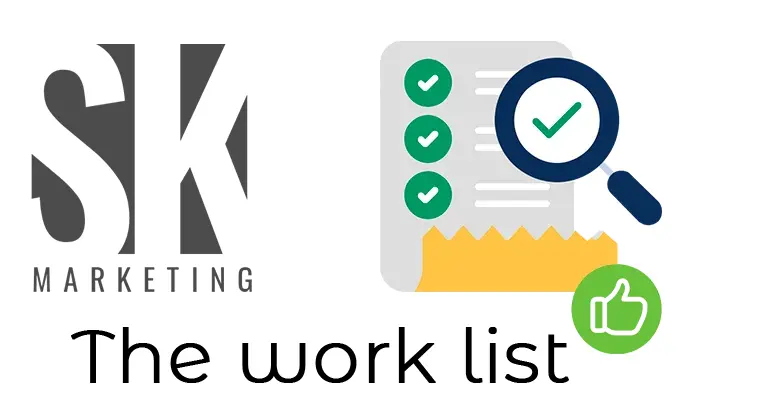
List of works:
- Keyword search and analysis: determining the most effective keywords and phrases that will help attract target customers.
- Content optimization: creating content on the site that meets user requests and is optimized for search engines.
- SEO: website optimization for search engines to increase its visibility and traffic.
- PPC advertising: launch and management of advertising campaigns in search engines and social networks to attract the target audience.
- Social media: management and optimization of social media accounts to increase the audience and improve the brand image.
- Email marketing: creating and sending emails to retain and attract customers.
- Analytics: data analysis to determine the effectiveness of marketing campaigns and identify areas for improvement.
- Content marketing: creation and optimization of content that helps the brand establish itself as an expert in the industry and attract target customers.
- Marketing automation: use of special tools to automate marketing campaigns, which allows you to reduce the time for many routine tasks.
- Web analytics: analysis of user behavior on the site, which helps to determine and improve the user's journey around the site.
- Reputation management: monitoring and management of brand reputation on the Internet.
- Video marketing: creation and optimization of video content to attract and retain the target audience.
- Influence on opinions and lobbying: using social networks and other tools to create a community in which you can lobby brand interests and influence user opinions.
Additional tasks in Internet marketing include:
- Mobile marketing: optimization of the site and content for mobile devices, as well as the use of mobile advertising to attract the target audience.
- Local marketing: website and content optimization to attract the target audience in a certain region.
- Marketing in messengers: using messengers such as WhatsApp to communicate with customers and attract the target audience.
- Referral marketing: using customer recommendations to attract new customers.
- Contextual advertising: advertising on websites and blogs that attract the target audience.
- Cross-selling: selling related goods or services to increase profit per customer.
- A/B testing: testing of various variants of the site, content, advertising, etc. to determine the most effective options.
- Internet reputation: creation and management of a positive Internet brand reputation, as well as elimination of negative reviews and comments.
- Influencer marketing: using popular bloggers and celebrities to promote products or services.
- Affiliate marketing: establishing partnerships with other companies for mutual support and attracting new customers.
- Authority marketing: creating brand authority and attracting the target audience through blogs, webinars, online courses, etc.
- Content marketing on mobile applications: creation and optimization of content for mobile applications to attract and retain the target audience.
- On-site marketing: using technologies to attract the target audience in real time, for example, via Bluetooth beacons.
- Marketing on YouTube: creation and optimization of video content to attract and retain
Attack the same:
- Retargeting: the use of advertising campaigns to attract the target audience that has already visited the site or shown interest in a product or service.
- Analytics: collection, analysis and interpretation of user behavior data to improve the effectiveness of marketing campaigns.
- Project management: planning and management of various marketing projects to ensure their implementation on time and budget.
- Automation marketing: use of software tools to automate marketing processes, such as automatic responses to emails, data collection and analysis, etc.
- Marketing on marketplaces: optimization of products and services on marketplaces such as Amazon, eBay, Google merchant center, etc.
- PR marketing: creation and management of the company's public relations to improve its reputation and attract new customers.
- Internet anonymity: the use of anonymity on the Internet to protect privacy and protection against cyberattacks.
- Product development and hypothesis testing: conducting research and analysis to determine the needs of the target audience and create a product that meets these needs.


 Sergey Kozlov
Sergey Kozlov